|
Over the years, numerous educators and other experts have weighed in on the importance of music education to the intellectual, emotional, and social development of young people. Yet the depth and breadth of music education programs as part of the standard school curriculum varies significantly from one nation to another. Following is an overview of the state of music education in selected countries and regions around the world. ScandinaviaThe Scandinavian countries—Denmark, Norway, Sweden, and Finland—offer robust music education programs both in and out of the classroom, all supported through government funding. One example of this commitment to music education is the fact that Finnish instructors training to teach the subject receive 350 hours of government-supported education. Finland’s commitment to music education is also notable in that it blends the great music teaching traditions of the Russian and Hungarian educational systems with the full complement of financial support available through the modern Finnish democratic social welfare state. Finnish music programs integrate the teaching of the subject closely with other academic disciplines with a focus on quality. Music teachers and students also enjoy the advantages that come with Finland’s long-standing respect for the value of music and art. Young children study music as a form of play and exploration within a systematic curriculum that has earned worldwide renown. South Korea
AustraliaAustralia offers an example of how a national music education program can look when there is inconsistency in funding and support for it. One study, administered under the auspices of The Music Trust, an organization that advocates for better music education programs, found that more than 60 percent of the schools that responded did not provide access to music education. Of the schools reporting that they did offer it, less than one-quarter of government-run schools were led by teachers with specialist qualifications in music. The figure is at variance with that of privately supported schools, of which 88 percent of the music programs were taught by specialist instructors. Australian music education typically focuses on developing students’ general knowledge of the history and practice of music, as well as the ability to express themselves creatively within a musical tradition. Moreover, there is an emphasis on the country’s own musical traditions of the past and present, including those of the Aboriginal people. In order to increase the quality of Australian music education, a national organization for teachers of music has initiated a government-supported program designed to narrow the gap between private and state-run schools. The program aims to expand the ability of music teachers to obtain ongoing professional development through a mentoring program. CanadaMusic education in Canada, like that in the United States and the United Kingdom, presents an inconsistent picture in that the level of commitment to it can vary widely from one school district to another. For example, more than one-third of Canadian schools responding to a recent survey reported that they either had no music program or had one taught by instructors without any background in the subject. Canadian experts have pointed to several roadblocks that stand in the way of further development of the music curricula, including a lack of funding and qualified teachers, as well as time to develop music programs properly. As in the US, parent groups often hold fundraising events to support their schools’ music programs. Additionally, Canadian schools typically emphasize the development of music listening skills for younger elementary students, the expansion of the curriculum to include learning performance skills, and visits to local musical performances for older students. The United KingdomIn the UK, financial constraints can also be a problem. Yet recent progress includes a 2012 nationwide government initiative that established more than 100 hubs for music education to provide more than 1 million students with the opportunity to use musical instruments. Critics of the UK’s music education programs have noted that the emphasis on learning to play an instrument takes up most of the average student’s time. Consequently, few students actually study music theory, music history, or the role of music as a vital cultural product. United StatesAs in the UK and Canada, many public school districts in the US are inadequately funded. And when budgets do need to be cut, music and arts education are often the first programs to be discontinued.
Parents and music teachers are well aware that their fundraising efforts are often the most significant factor in determining whether their schools can offer a high-quality music program—or any music program at all. Unfortunately, there is no evidence to support the widely-held idea that exposing infants and children to classical music can lead to an increase in their intelligence. However, research does indicate that listening to classical music can have a positive effect on many other areas of children's development. Recent studies have suggested that young children who are exposed to classical music find it easier to concentrate, develop a stronger sense of self-discipline, are better listeners, and ultimately have a wider range of interest in music as they grow into young adults. If you’re interested in introducing your child to classical music, these five popular and powerful pieces written by some of the greatest composers in history are an excellent place to get started. 1. Eine kleine Nachtmusik, Wolfgang Amadeus Mozart
2. The Flight of the Bumblebee, Nikolai Rimsky-Korsakov
3. Fur Elise, Ludwig von Beethoven
4. The Nutcracker Suite Op. 71a, Pytor Ilyich Tchaikovsky
5. Clair de Lune, Claude Debussy
When parents encourage their children to take music lessons from a young age, the piano is one of the most popular instrument choices. There is no definitive age at which experts suggest children begin music lessons; young musicians only need to be large enough to reach the keys and have enough hand dexterity to manipulate them. If you are a parent who is thinking about introducing your young child to music through piano lessons for the first time, there are certain things you will need to do in order to prepare your child and your home for the experience before the first class. Listed below are six things to do before your child attends his or her first piano lesson. 1. Invest in a piano for your home.The first step that you can take to benefit your future music student is to purchase a piano for him or her to use. Ideally, this should be done months or years ahead of time so that your child can grow up around the instrument and develop a familiarity with it prior to learning to play. At the very least, make sure to invest in a piano right before he or she begins lessons. While there are ways to obtain free access to a piano outside of the home, nothing will be as accessible or as beneficial to your child’s learning experience as having a piano to practice on in his or her immediate environment. While a new piano can be a significant investment, there are many websites where you can find gently-used pianos for affordable prices. Once you’ve found a piano that suits your budget, make sure to get it tuned by a professional so that the notes your child plays as he or she learns are in key. 2. Create the ideal practice space around the piano.Where you place the piano in your home will affect how your young music student feels about the act of practicing. Professionals in music education suggest situating your piano in an area of the home that is neither too isolated nor too close to distractions like a television or computer. The area should be warm and welcoming with adequate lighting. It must also include all the equipment that your child will need for practice sessions, including music sheets, pencils, and a comfortable piano bench. The more positive the physical practice area is, the more likely your child will feel enthusiastic about practicing when the time comes. 3. Listen to music together.Spending quality time listening to music with your child can help him or her to develop a positive relationship with it as they grow up. While they listen, try to introduce them to basic musical concepts like rhythm by having them clap along to the beat of a song with you. It can also be helpful to look up exciting videos of piano performances on YouTube, such as those made by the Piano Guys, to give your child a visual of what it’s like to play the instrument. Having this kind of familiarity may help children feel more comfortable with the instrument when they begin their first lessons. 4. Help your child learn the ABCs. If your child understands the alphabet by the time that he or she takes up piano lessons, that ability will help them to identify and understand the names of notes. The musical alphabet spans notes with names from A to G, and a child who can remember the order and recognize letters when written on a music sheet will be in a better position to learn. It can also be helpful to teach your child how to distinguish between his or her right and left sides as way to improve his or her ability to interact with a piano’s keyboard. Helping your child become aware that he or she can mirror the action of one hand on a side of their body with the other will facilitate the development of better spatial awareness. Additionally, it will help him or her better understand directions given during lessons. 5. Have a discussion about lessons and expectations.While your child may be excited about the prospect of learning to play the piano, it’s important that you as the parent communicate your expectations for him or her at the outset. Make sure that your child knows that learning an instrument will be a fun experience, but that it requires practice and dedication. Talk to your child about the importance of daily practice, and make a verbal agreement on how often, when, and for what minimum amount of time your child will dedicate him- or herself to the practice of the piano each day. 6. Have a meet-and-greet with the instructor.When choosing a music instructor for your child, try to schedule a meeting with prospective teachers before you make a decision. Once you find the right instructor, make sure to discuss the goals that you would like your child to accomplish through lessons and get feedback on the best ways that you can foster your child’s musical development at home.
Research proves the incredible effects that music education can have on the minds of children. Apart from aiding skill development in areas like language, test-taking, and spatial intelligence, learning music can also help children develop socially and emotionally, and allow them to explore their creativity in a way that is both fun and cathartic. Today, it seems more imperative than ever for all children to have access to an education in music, but not all parents or schools can afford to connect kids to these programs. To help promote music education, consider donating to nonprofits and foundations dedicated to this cause. The following organizations are some of the most visible in this field, but many other groups exist as well. VH1 Save the Music FoundationEstablished in 1997 by the eponymous music television network, the VH1 Save the Music Foundation has since raised $50 million to buy new instruments for music programs at over 2,000 public schools. Altogether, this work has directly impacted the lives of roughly 2 million American children. The foundation believes that music is a key part of kids’ healthy development, and suggests that lessons in the subject can boost children’s interest in attending school, promote valuable life skills, and help kids grow into well-rounded adults. The group’s ultimate goal is to make sure every child in the United States has the ability to play an instrument if they want to. VH1 Save the Music Foundation encourages people to support its work by donating directly to the cause or by hosting a fundraiser on the organization’s behalf. Details about hosting or giving to a fundraiser can be found here. Fender Music FoundationAnother nonprofit sponsored by a major music industry corporation, the Fender Music Foundation is a charitable organization established by musical instrument maker Fender in 2005. This grantmaking organization guarantees that 100 percent of all donations from supporters go directly to paying for instruments used in music classrooms around the country. To date, the foundation has helped more than 187,000 students by donating a wide range of instruments, including guitars, drums, keyboards, brass instruments, pianos, woodwind instruments, amps, and recorders. Supporters can donate funds and, in some circumstances, instruments to the organization. Monetary donations can be made online via the Fender Music Foundation website. Donors who give $30 or more receive a collectable metal keychain in the shape of a pick or a Stratocaster guitar. National Association of Music Merchants Foundation (NAMM Foundation) The NAMM Foundation is the philanthropic arm of the National Association of Music Merchants, which brings together professionals from the music, sound, and event technology industries around the world. The foundation was created in 2006 with a three-part mission: to advocate for music education, to fund and promote research on the effects of music, and to make music instruction accessible to people of all ages and backgrounds, including veterans and the elderly. The NAMM Foundation awards grants to a wide range of music-based organizations in need of support every year, and partners with groups such as The Kennedy Center, Americans for the Arts, the Music Achievement Council, and the aforementioned VH1 Save the Music Foundation. The group’s online donation portal can be found here. The Roots of MusicA regional nonprofit focused specifically on the needs of students in New Orleans, Louisiana, The Roots of Music promotes the idea that music education can make a significant difference in the life of a child. Through the organization, kids between the ages of nine and 14 from disadvantaged backgrounds in New Orleans gain access to education in music history, theory, and instrumentation. Lessons provided by the group have a special focus on New Orleans’ rich musical heritage and its history as the birthplace of jazz. The most unique aspect of The Roots of Music, however, is that the group goes beyond music lessons to also provide participants with hot meals and transportation to and from classes—two things that could otherwise bar some children from participating in a music education program. To help the work of The Roots of Music, supporters can donate, check the website for volunteer opportunities, or attend charitable events throughout the year that benefit the organization. Little Kids RockLittle Kids Rock was formed by elementary school educator David Wish in 1996 as a response to a severe lack of funding for music education at the school where he worked. It began with Wish offering free after-school guitar lessons to students and has since evolved into a nationwide organization that provides 650,000 students from underserved communities with access to instruments and modern band classes. The nonprofit accomplishes this primarily through financial support for schools that have seen their music programs shut down and by training volunteer teachers to conduct the modern band lessons developed by Little Kids Rock. The program currently operates in 37 states and serves more than 200 school districts. Many celebrity musicians are public supporters of Little Kids Rock, including Carlos Santana, B.B. King, Bonnie Raitt, Lady Gaga, Bruce Springsteen, Joan Jett, and Gene Simmons, among many others. Interested parties can donate via the organization’s website at www.littlekidsrock.org or learn more about becoming a Little Kids Rock volunteer teacher on the organization’s FAQ page.
Don Gayhardt is a Pennsylvania-based business executive with more than 25 years of leadership experience in the fintech sector. In addition to serving as the president and CEO of CURO Financial Technologies Corp, Don Gayhardt applies his leadership experience to a position as the chairman of Music Training Center Holdings, LLC, a group that offers quality music programs to children in the Philadelphia area. One form of music that many parents would like their children to take an interest in is classical music. Studies have shown that exposure to classical music in childhood can have a positive impact on the development of memory skills and spatial-temporal reasoning. Parents who want to foster an interest in classical music in their children should consider the following helpful tips: 1. Demonstrate excitement about classical music.When a parent shows enthusiasm for a certain type of music, their positive energy is bound to have an impact on their child’s opinion. Look for opportunities to demonstrate your own interest in classical music to your child in everyday situations. It can be helpful to make sharing music a regular family activity, taking turns sharing your favorite classical pieces with your child and listening to music your child has selected. 2. Play classical music in your home and on car trips.In addition to showing an active interest in classical music, incorporate classical songs into your family’s daily routine. Play pieces from your favorite composer as you cook dinner, or in the car as your take your children to school. You can also consider playing classical music for your children as a lullaby to help them fall asleep. The more familiar your child is with the genre, the more interest they may develop in it. 3. Engage your child’s interest with questions.Asking your child opinion-based questions about classical music is an excellent way to engage their attention. When you play a piece, ask your son or daughter how the music makes them feel. Ask your child about the parts of the song they most enjoyed, and what the music makes them think of. 4. Take your child on a field trip to the symphony.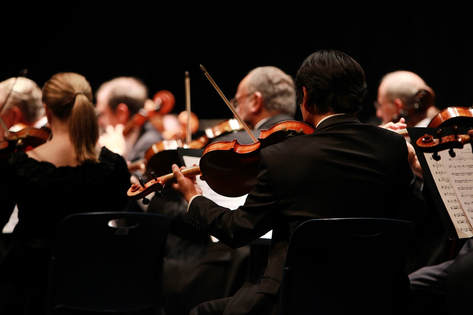 Taking your child to a symphonic performance is an excellent way to foster a love of classical music. Apart from the novelty of being out of the house, going to the symphony and seeing the lights, witnessing the orchestra setup, and hearing the music in person for the first time can leave a lasting impression. If you believe your child is mature enough to sit through a symphony performance, make sure to pick the right show. Some local orchestras host performances specifically designed for children, featuring music from the soundtrack of popular children’s films. For children who aren’t quite interested enough to sit through a symphonic performance, the ballet can be a great alternative. Ballet performances provide visual entertainment while featuring classical music as a soundtrack. The Nutcracker is a perennial ballet favorite for families with young children. 5. Encourage your child to take music lessons on a classical instrument.Some children may become interested in the genre if they are allowed to take lessons on a classical musical instrument. Developing as a musician can teach your child to appreciate all genres of music, including classical, in a way that they never would have otherwise. Great beginning instruments for this purpose include the piano and classical guitar. Though the right age to begin lessons will vary from child to child, a majority of professionals suggest that five years old is a good age to start piano, while guitar may be better for eight or nine year olds, due to the hand dexterity necessary to swiftly change chords. 6. Read your child stories that involve classical music. Reading books about famous classical composers to your children during story time may be an effective way to educate and entertain them at the same time. Books like Why Beethoven Threw the Stew by Steven Isserlis and The Farewell Symphony by Anna Harwell Celenza are great choices for teaching children about classical music during story time. Other books like Listen to the Birds by Ana Gerhard, which includes an accompanying CD, can teach your kids about the genre and allow them to hear the sounds of the distinct instruments used in classical music. 7. Watch movies about classical composers.If your child connects better with films than books, there are many family-friendly movies that can help them learn to appreciate classical music. For a lesson on the life of one of the world’s most famous composers, consider the film Beethoven Lives Upstairs. Other movies for children that incorporate classical music include animated features like Looney Tunes Musical Masterpieces, as well as Disney’s version of Peter and the Wolf.
Studies continue to show the positive effects that music education has on children’s lives. Whether a school program is designed to familiarize students with music in general or to train them on a specific instrument, the impact extends far beyond developing a good ear and a knowledge of scales, and can potentially lead to improvements in areas like language development, spatial-temporal skills, and test scores. Today, music education classes are more engaging and comprehensive than ever, as modern technology has given teachers new tools to help students develop in their abilities as musicians. Listed below are five ways that technology positively influences the music classroom today. 1. Technology reduces problems associated with paper music. Traditionally, young music students who train on an instrument are responsible for keeping track of paper music sheets that they annotate during lessons and then bring along to every class. Many teachers admit to struggling with students who routinely lose their sheet music or have a habit of leaving it at home, but technology has the ability to solve this problem. Instead of using paper sheet music, teachers today can rely on digital tablets that keep all scores in one place and easily save any notes made in class. Tablets are also a helpful option for students during practice—they don’t have to struggle to keep paper sheets upright on a music stand, don’t find themselves missing pages mid-performance, and don’t have to think about turning pages as they play. Some tablet-friendly apps even allow a teacher to turn pages for all of his or her students at once from the teacher’s own device. Technologies like tablets and computers have also made music homework easier for students to store and organize. Web-based or other digital lessons and homework can be completed from anywhere, at any time, allowing forgetful students to avoid misplacing their assignments and earning lower grades. 2. Technology makes lessons clearer.Modern technologies like interactive whiteboards (IWB) are making it easier than ever for teachers to help students visualize and understand music concepts in class. When paired with notation programs like Noteflight, Sibelius, or Finale, the IWB can be useful for group lessons on music reading and writing, as the board can display and perform short scores as programmed by the instructor. IWBs also make it easy for teachers to record themselves demonstrating how to draw different notes and music symbols on the board for playback using a screen capture tool. This allows an instructor to step away from the board and give students a clearer view of what is being taught. Likewise, the ability to annotate scores projected from the IWB in real time allows a teacher to highlight different notes or measures of a song for children, making it easier for students to follow along with the lesson. Certain IWB software can also enable a teacher to mute specific notes or sections within a score to give students the opportunity to play along at designated points. Overall, research indicates that these kinds of technologies create a higher degree of flexibility in class and free up more time for teachers to answer questions and expand on topics during a lesson. 3. Technology makes music more accessible. One of the best benefits that technology has given to students is to make music more convenient and readily available. From iPad apps that allow children to create digital tunes on the go to the immeasurable catalog of music available for free on the Internet, modern technology has established a world in which people can explore music from anywhere. In the classroom, this means that teachers can quickly and affordably use the Internet to show students the work of a wide range of musicians throughout history. Students can listen to and be inspired by the work of composers who lived hundreds of years ago, or discover music genres from countries they have never visited. Of course, the Internet is also an excellent resource for finding educational videos and games that help drive home lesson plans without the need for budget increases, which many schools cannot afford. Additionally, the Internet gives students access to websites and tablet apps that enable them to experiment with music composition long before they’ve developed the ability to play a traditional instrument. Some of the best apps that help children learn about composition prior to mastering an instrument include Sound Drop, SoundPrism, inHarmony, Dropophone, and Pattern Music. 4. Technology enhances communication between teachers and parents.Though not directly related to the lessons that take place in a music classroom, one important thing that technology has done for students is establish stronger lines of communication between teachers and parents. Research shows a connection between positive parent-teacher communication and student performance, and modern technology has made it easier for the two parties to communicate through email, classroom web pages or portals, webchat, video conferences, and social networking tools.
Children with parents who are involved in their education typically have better class attendance and behavior at school, and may be more able to see their music homework in a positive light. In addition, parents who have good communication with teachers are more likely to be familiar with the topics that their child is learning in class and can reinforce these lessons at home to bolster the child’s understanding of the material. For many children, learning to play a musical instrument is an exciting extracurricular activity that can yield many benefits, including better academic performance, improved social skills, and the opportunity for creative expression. However, even the most dedicated young music students may reach a point where their interest in the subject wanes and they want to quit their lessons. While parents should not force an unhappy child to pursue musicianship, the following seven tips may help parents when their child expresses disinterest in an instrument they previously enjoyed playing. 1. Review your level of involvement. While it’s important for parents to provide children with encouragement as they pursue music, too much involvement can have a negative effect on a child’s commitment to music lessons. If parents find that they constantly need to remind their child to practice or if discussions about lessons often result in arguments, it may be time to consider taking a step back and giving the child more personal autonomy. While it’s important to remember that this advice is more relevant to older children, allowing young music students to decide when and how long they practice may help them feel empowered and renew their interest in music overall. 2. Show more support.Alternatively, kids may begin to lose interest in music because they don’t feel enough encouragement. Parents should make sure that they are taking the time to occasionally listen to their child practice and give positive remarks about performances. Parents can also show support by routinely asking thoughtful questions about their child’s lessons and acknowledging signs of major progress. Additionally, try making a celebration out of even small accomplishments in order to bolster your music student’s confidence in his or her abilities. When kids feel proud of themselves and realize the progress they’ve made on their instrument, they are more likely to stick with their lessons. 3. Make sure that peer pressure is not involved.In some cases, children may lose interest in lessons because their friends discourage them or make negative comments about playing an instrument. Peer pressure can be especially difficult for students in the pre-teen and early teenage years to navigate, and parents should make sure their child’s sudden disinterest in music is not rooted in negativity from their friends and classmates. Having a candid conversation about peer pressure can help prevent a promising music student from quitting an activity that he or she genuinely enjoys. 4. Play similar music in the home.No matter which instrument a child is learning to play, parents should make a point of introducing children to recordings of professional musicians who play a similar style of music. By playing music that is similar to the style the child is learning, parents can show that the family as a group has an interest in the subject. This, in turn, may bolster the child’s interest. Greater familiarity with a certain style of music may also help a child to enjoy it more, and thus feel more enthusiasm about learning to play an instrument. 5. Set up more performances.An endless cycle of only lessons and practice with few opportunities for performance can bore children and make them wonder what the purpose of learning to play the instrument is. Parents can help children stay motivated to make progress on an instrument by finding more opportunities for performance. While recitals organized by the child’s music teacher may be infrequent, parents can seek out local competitions and explore local music groups to allow their child to demonstrate his or her playing skills more often. It can also be fun to invite friends and family over for an event and ask the child to play for guests. By giving the child something to practice for, more performance opportunities may encourage a bored music student to continue lessons. 6. Suggest a new instrument.Growing disinterest in music can also stem from a child’s indifference toward his or her instrument. Children who enjoy music but aren’t excited about the specific instrument they are learning to play may find a renewed passion for the subject if their parents let them take lessons on something else. Parents should arrange for children to take lessons on an instrument that makes them enthusiastic about learning. In addition, don’t be discouraged if a child’s first choice doesn’t turn out to be right for him or her. 7. Find a new teacher.Some children’s learning styles simply do not match up with their music teacher’s instructional methods. A teacher may have a great talent, but a teacher-student pair with the wrong chemistry can easily result in an unhappy and unmotivated child. After making sure the child’s distaste for music lessons isn’t caused by something else, parents should consider arranging for a few weeks of lessons with another instructor. Opt for one who employs a different style of teaching to see if the child’s interest in music returns.
Of all the extracurricular activities that children participate in, music lessons offer kids the ability to hone a unique set of skills and gain useful advantages, including the ability to express themselves creatively, improve their academic skills, learn discipline, and familiarize themselves with other cultures. If you’re considering enrolling your child in music lessons for the first time, read through the answers to the following frequently asked questions that parents often have about children’s music lessons. Q: At what age should my child begin music lessons?A: In general, there is no universally applicable age at which your son or daughter should begin taking music lessons. Readiness for lessons depends largely on a child’s physical size, hand dexterity, attention span, and interest in learning to play music. Each of these factors will vary widely from child to child, and parents must decide whether their son or daughter is prepared to excel in music lessons on a case-by-case basis. Experts suggest that children around the age of five or six can successfully begin to take lessons on instruments like the piano, but even much younger children can enroll in more relaxed general music classes to encourage their interest in the subject as a whole. Q: What is the average cost of music lessons?A: There are many different types of music lessons for parents to choose from, with some coming at a greater expense than others. Rates for private lessons in your local area will vary based on the teacher’s experience, and will likely be much more costly than group lessons. Additionally, some instrument lessons can be taken as part of a school curriculum in band or orchestra class, though even these lessons are likely to cost families around $300 between instrument rentals and other related activity costs. Q: What should I look for in a music teacher? A: If you choose to enroll your child in lessons with a private music teacher, there are certain qualities that all parents should look for in potential instructors. Apart from having a reasonable amount of experience in the subject, a children’s music teacher should be engaging, patient, communicative, and goal-oriented. He or she should have an obvious love for music. In addition, it’s extremely important that he or she also have a teaching style that suits your child’s personality. A child who does not respond well to an instructor’s methods may come to resent the teacher, and ultimately it may negatively affect your child’s interest in music. Q: How long should the average music lesson be? A: The length of the average music lesson will depend on a child’s age, but for most children under 12, half-hour lessons are a good start. Though this estimate is not applicable in all circumstances, 30-minute lessons will help keep your child’s attention span on the task at hand. Young kids can become restless and tune out when lessons stretch beyond the 30-minute mark, though every child is different. Ultimately, the right lesson length will be one in which your child feels engaged and reasonably focused the entire time. In addition, keep in mind that your child should also spend time practicing his or her instrument in addition to attending lessons. Q: How can I help my child as he or she learns to play an instrument?A: There are many simple yet effective ways that you, as a parent, can help you child excel as he or she learns to play. For example, creating a special space in your home for your child’s musical pursuits may help him or her stay focused and avoid distractions when it comes time to practice. Additionally, it can be extremely supportive for parents to show interest in their child’s music—especially if the parent acts more as an audience member rather than a critic. It’s also helpful to ask children open-ended questions so they can demonstrate their knowledge and commit concepts to memory. Q: How long will it take for my child to learn to play an instrument?A: Like so many aspects of learning to play an instrument, the time it takes to reach a reasonable level of proficiency will differ with each child, and there is no straightforward answer. However, the one thing that all children can do to improve their abilities on any given instrument is to practice regularly. Routine, focused practice is the key to developing the skills necessary to play with proficiency, and no child can reach his or her music goals without it. It’s also important to note that children who begin several years of lessons at an older age (like nine) are likely to see significantly more progress in that multi-year period than a child who takes several years of lessons beginning at a younger age. Q: Should I allow my child to change instruments if he or she asks?A: In some cases, you may find that your child begins lessons on one instrument only to tell you that he or she wishes to switch over to another. Experts suggest that allowing your child to switch over to a new instrument is reasonable if the child has dedicated several months of practice to the instrument before deciding to cast it aside. However, make sure that your child is not simply frustrated with his or her inability to play well after very little time. As a general rule, encourage your child to give an instrument several months of practice before he or she decides to try something new.
While there has been some debate in recent years about the real-world value of arts education, school music programs undeniably offer children numerous benefits that can help them excel in academics as well as in life. Listed below are eight reasons that music education is an important part of kids’ lives. 1. Music exercises the brain. Research suggests that the minds of children who study music operate differently than those of kids who don’t. Taking lessons on an instrument requires a young student to exercise the brain in new ways, resulting in a higher degree of neural activity that ultimately strengthens parts of the brain related to fine motor skills and sound discrimination. Further studies suggest that taking music lessons also requires children to exercise parts of the brain related to memory, making predications, and attention span, leading to better function in these areas. 2. Music teaches children about diversity.Music education is a simple yet effective way to teach children about the value and importance of cultural differences. The unifying nature of music can help children see similarities between themselves and people who look or act differently, leading to greater acceptance of these differences and an understanding of the value of inclusion. Children who learn about the music enjoyed by other cultures are better able to see connections between themselves and others because of the way that people from every corner of the globe all dance, sing to, and play music. 3. Music may help children develop a larger vocabulary.Music lessons are an excellent way for children to expand their vocabularies. Research shows that the longer a child has trained in music, the more advanced his or her verbal memory is. A child’s vocabulary plays an important role in other scholastic endeavors, such as reading comprehension, communication, and self-expression, and can help boost overall academic performance. 4. Music can help a child learn how to work in teams.Group music lessons are an excellent opportunity for children to learn how to work together with their peers in order to achieve a common goal. Participation in musical groups like bands or orchestras requires children to develop skills related to cooperation, negotiation, and self-awareness—all of which are lessons they must learn in order to become a successful adult. Altogether, the teamwork skills that children gain through music education can result in a higher degree of social competency, giving them the ability to build positive, healthy relationships with peers. 5. Music can help a child develop higher levels of confidence.Commitment to music study gives children the opportunity to develop a new skill over time, which can help build confidence. As a child becomes more and more accomplished on an instrument, he or she may feel a sense of pride and satisfaction in his or her ability to cultivate a new skill through hard work. Additionally, children who take music classes in school often have the opportunity to perform in front of an audience. Preparing for and performing in a concert instills a sense of self-confidence in kids, and helps them learn how to present themselves in front of a crowd. 6. Music can teach children the value of perseverance.Learning to play an instrument is not a quick or easy process, but children who commit to music lessons come to know the value of perseverance in the face of difficulty. These children learn to stick with an activity, even when the process becomes frustrating, and learn the rewards of pushing past challenges. Musicianship is also an excellent way for children to understand the importance of discipline, as they recognize the talents they are able to develop when they routinely set aside time for practice. 7. Music may lower the likelihood that a child will later use drugs or alcohol.Studies have shown that children who study music are less likely than those who don’t to experiment with substances like alcohol, drugs, and tobacco in their lifetimes. Additionally, statistics indicate that children who have taken music classes have a higher rate of school attendance than those who don’t, and are almost 20 percent more likely to graduate from high school. 8. Music gives children a way to express themselves.In addition to the more obvious academic and social benefits that can help children develop into healthy, functional adults, music also offers children a platform for self-expression. A child who has taken lessons will be better equipped to express him or herself through music and will have a useful outlet for developing his or her creativity. Music can help children express feelings they may not yet be able to articulate with words, and the creative development involved in self-expression may set children up for success in later life. Creativity is noted as a major indicator for leadership success and professional accomplishment.
Though much has already been written about the effects of music on child development, researchers continue to discover new benefits for babies and children who are exposed to music from an early age. To better understand the ways that music can have a positive, lasting impact on the lives of children, parents should be aware of the following seven facts. 1. Children can distinguish between types of music before their first birthday. Though most children have only just begun to develop the ability to speak words at 12 months of age, researchers from Brigham Young University have discovered that babies as young as 9 months are able to recognize a difference in music that is upbeat and happy and music that is gloomy and sad. Another study from Canada’s McGil University showed that babies as young as 8 months are capable of differentiating between types of instruments, noting that they showed an awareness of difference between the sound of a piano recital and that of an orchestral performance. The same research also indicated that babies of this age had the ability to recognize a piece of music two weeks after they were first introduced to it. 2. Music can help children develop stronger literacy and language skills.Regular exposure to music has been shown to have a significant impact on literacy and language development in children. The human brain takes an approach to processing music similar to the one it uses understanding language. As a result, listening to music from a young age can help children develop the skills necessary to decode and link words - a key factor in learning to read. Music further contributes to the development of literacy skills by helping children to develop cognitive skills like auditory discrimination and sequencing, and vocabulary expansion. 3. Social and emotional skills can be developed through music.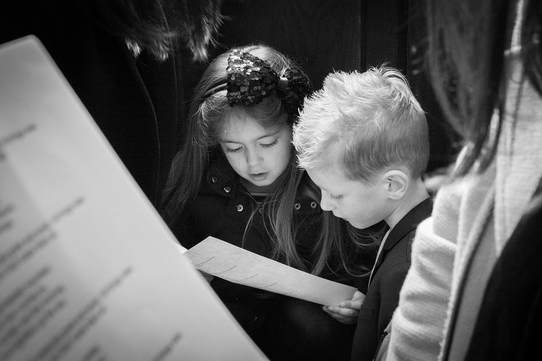 Along with providing cognitive benefits, music can also positively impact children’s socio-emotional development. A study of preschoolers showed that activities that required children to move and listen to music were likely to promote cooperation, group cohesion, and positive social interaction among the participants. Preschool-aged children who participated in dancing and singing activities together also showed greater signs of empathy for the children with whom they engaged in the activity. As with adults, music also provides children with a way to bond with peers, and a love for the same songs or type of music can encourage social connections. Overall, music can also help children with emotional development by giving them a tool to use in the process of self-expression and the recognition of new emotions. 4. Children can begin taking music lessons at a very early age.Though many parents prefer to wait until a child is at least 5 or 6 years old to begin music lessons, some pediatricians suggest that children may begin formal training on an instrument at an age as young as 3. The capacity to take lessons this young primarily depends on a child’s physical size and dexterity. This is because some children at 3 years old are not large enough or have yet to develop the motor skills necessary to manipulate certain instruments, such as the piano. Research shows that children who participate in formal lessons from a young age have a better capacity for memory and show brain development that is different from children who do not receive musical instruction. 5. Music can benefit children with disabilities.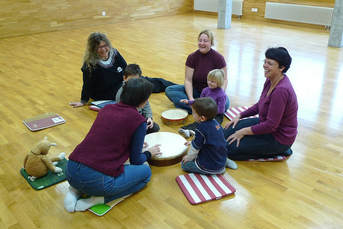 Children with special needs also benefit from regular exposure to music in many of the same ways as typically-developing children. This includes children living with autism, cerebral palsy, childhood apraxia of speech, and learning disabilities. Therapists have found that music’s capacity to help people bond, communicate without words, get motivated, and express themselves give it the power to improve quality of life for children with disabilities. It has also been shown that music may improve the emotional state of children who have experienced trauma or have undergone major medical procedures, and may even ward off the effects of anxiety and depression. 6. Children who take music lessons may get into less trouble.As children grow older, statistics show that those who participate in school-sponsored music programs such as band or orchestra are less likely to use tobacco, drugs, or alcohol than their peers. Children with a history of music instruction also tend to have higher levels of academic achievement, higher SAT scores, and earn more awards and academic honors than their counterparts. 7. Some smartphone apps can help children develop music skills.While it isn’t the case for all games available on iOS and Android, some smartphone apps can help children develop music skills in a fun, easily accessible way. Groups like Common Sense Media and online periodicals like The Guardian have designated apps like Loopimal, Crayola DJ, ABC Music, Toca Band, and Mini Piano as educational apps. This is because they provide children of all ages with the opportunity to explore their creativity and compose music of their own.
|
Photo used under Creative Commons from Marina K Caprara
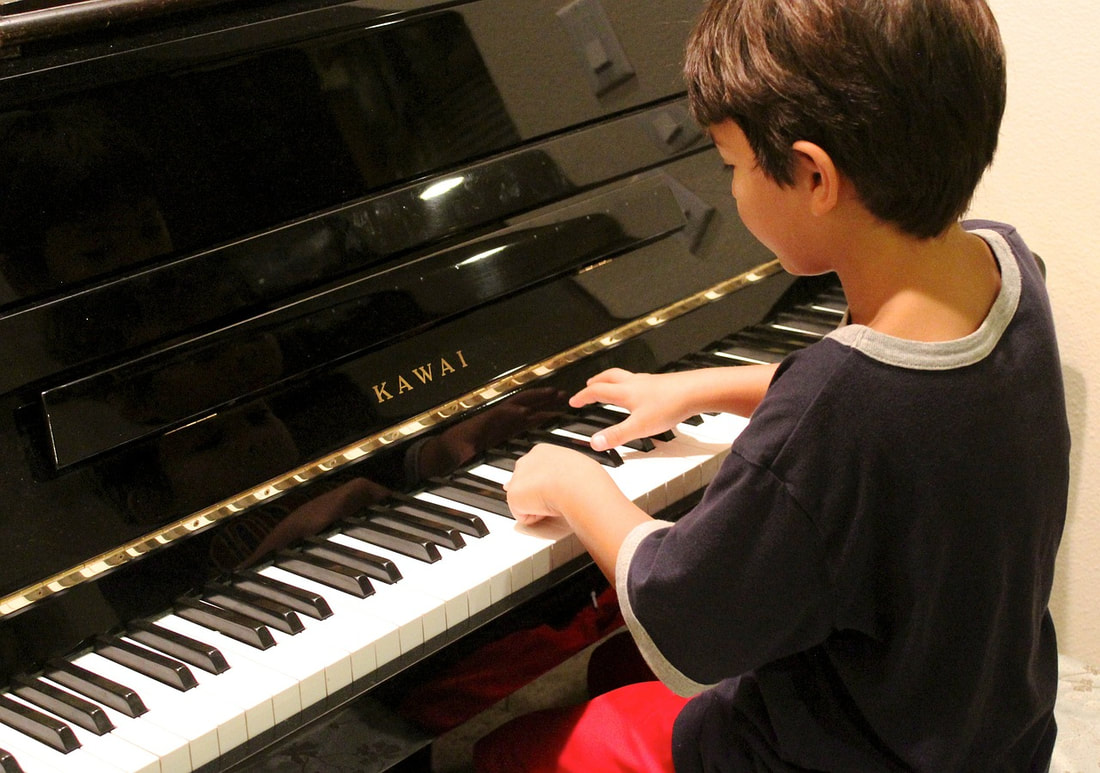
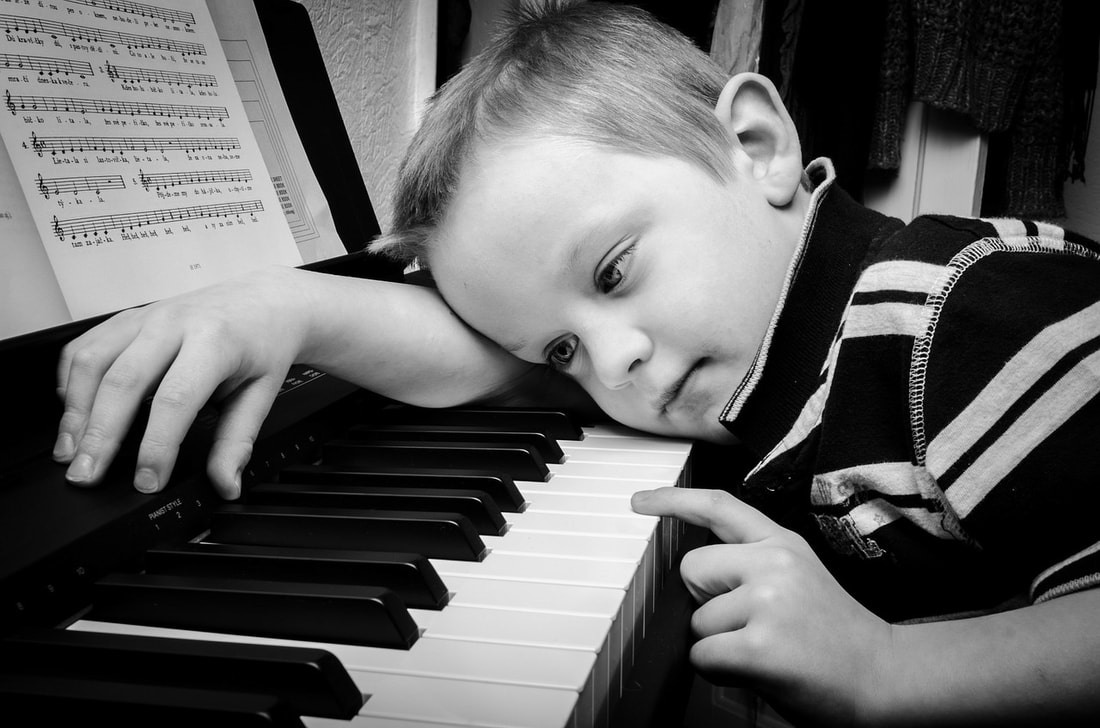

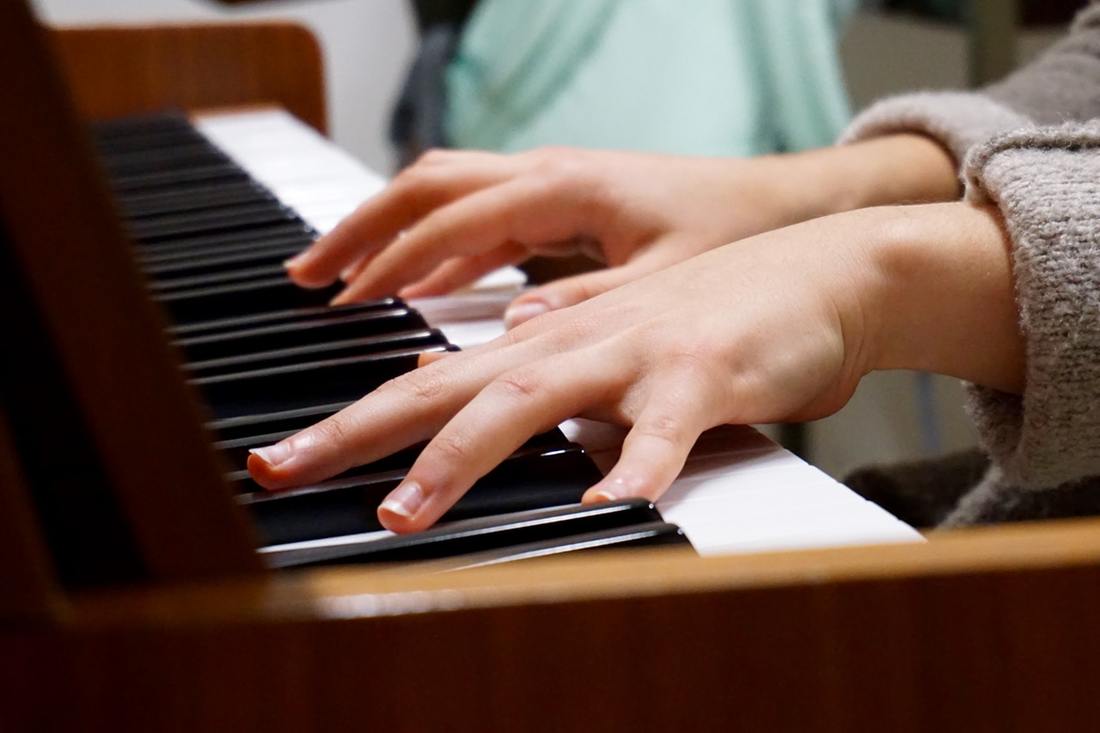
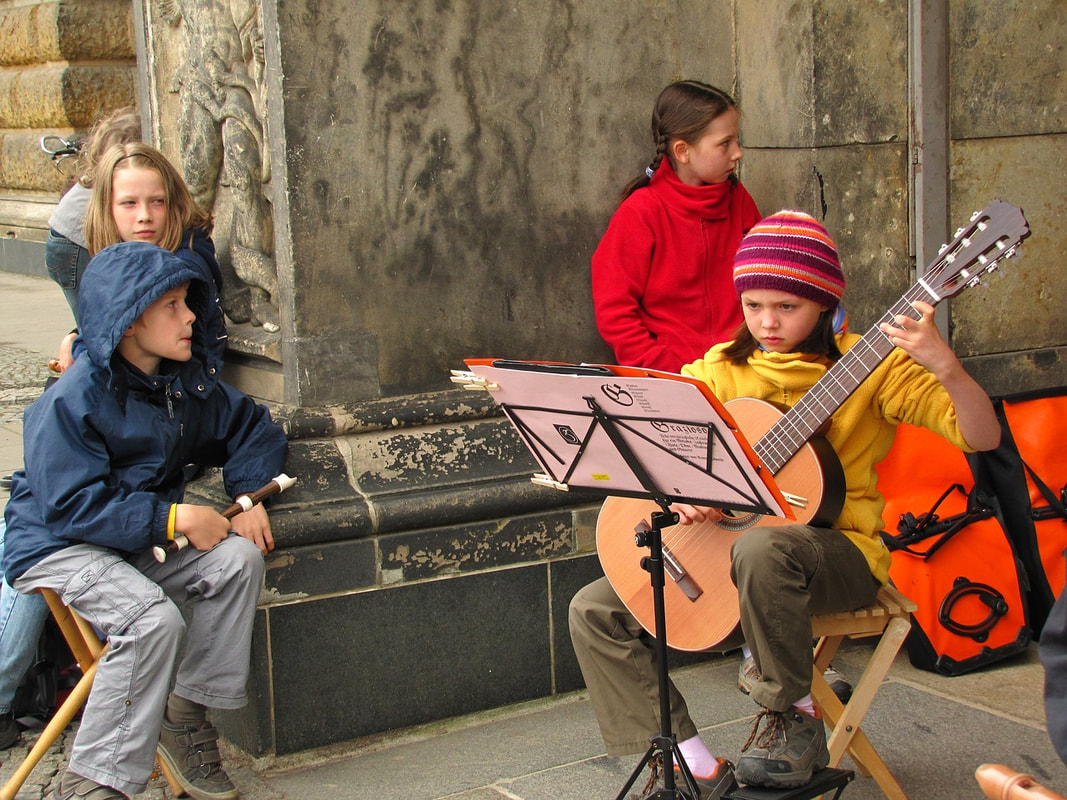
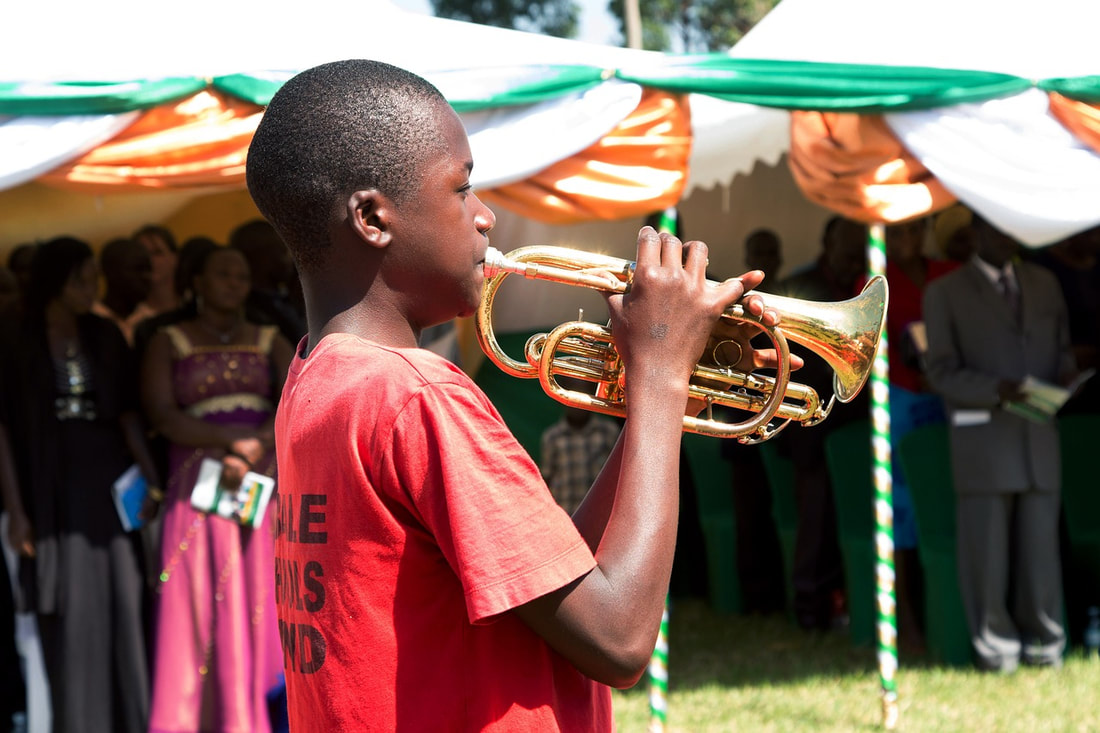

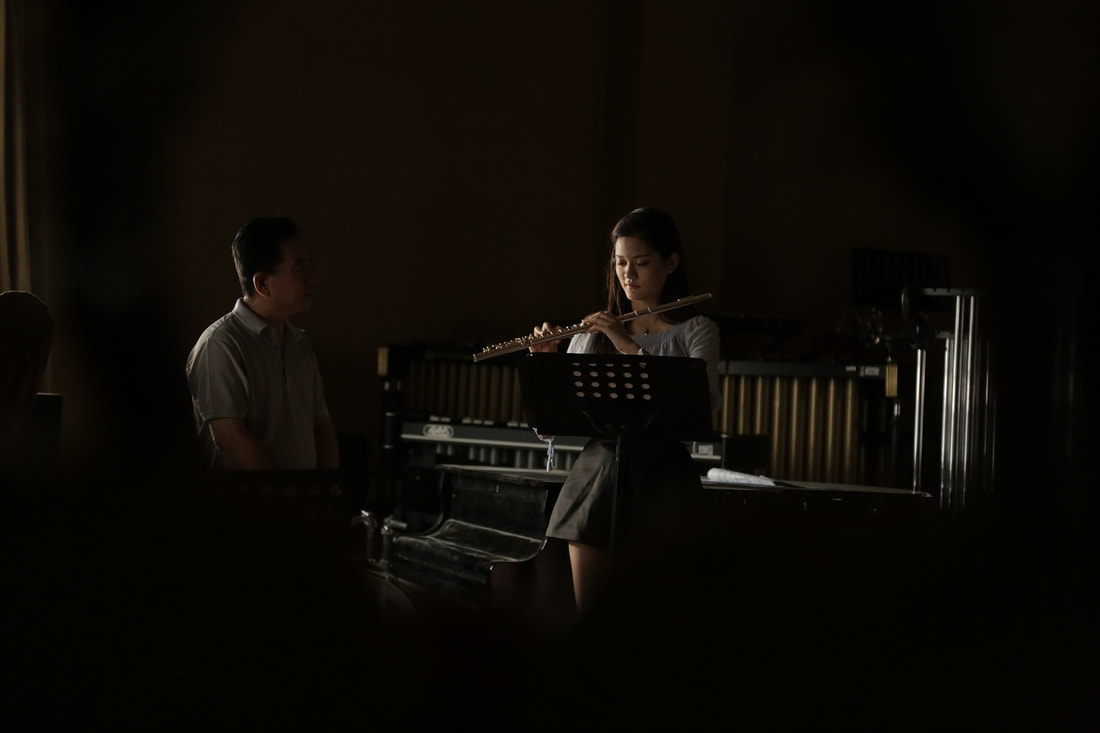
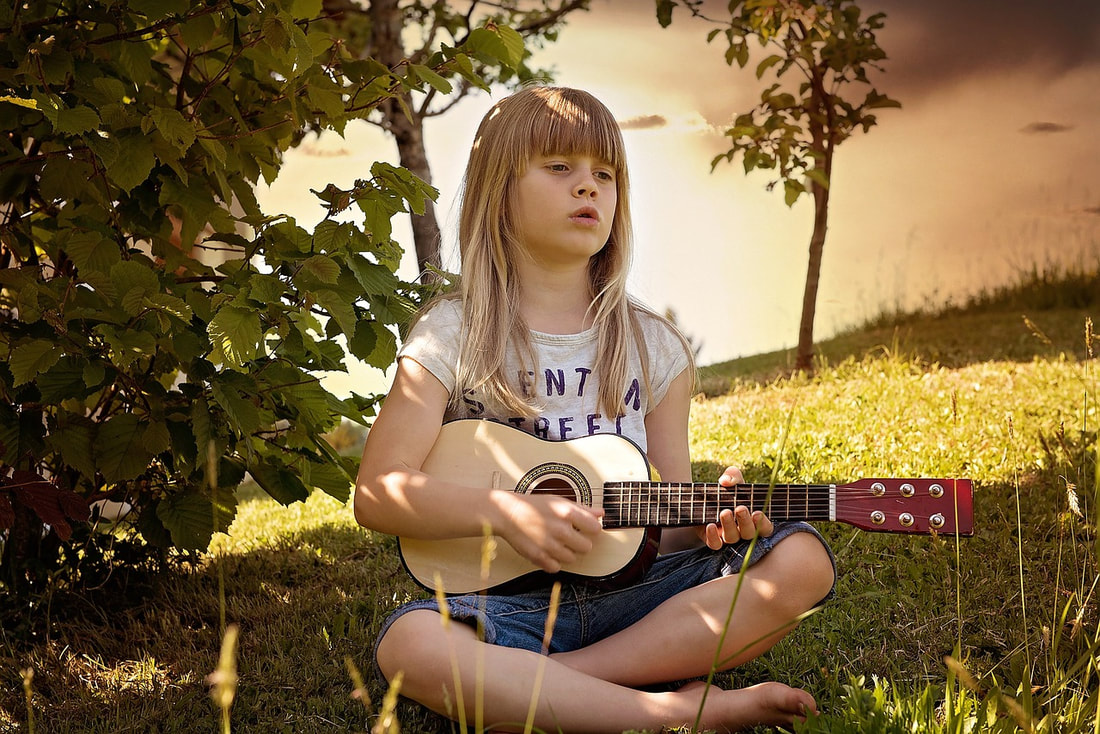
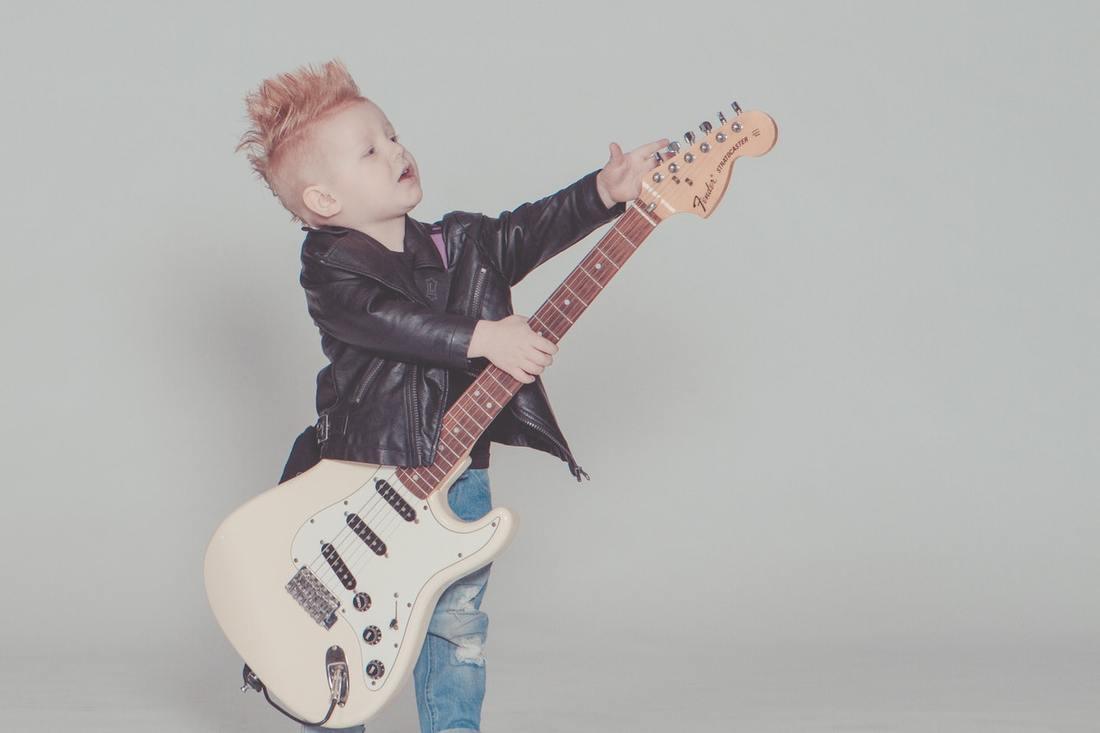
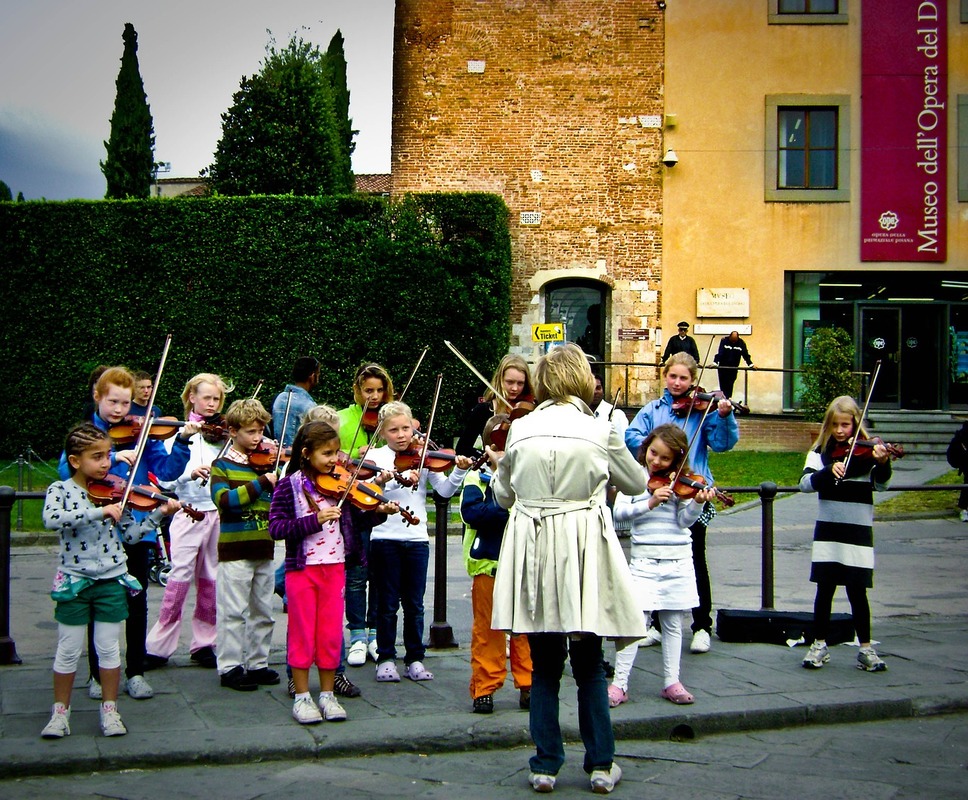
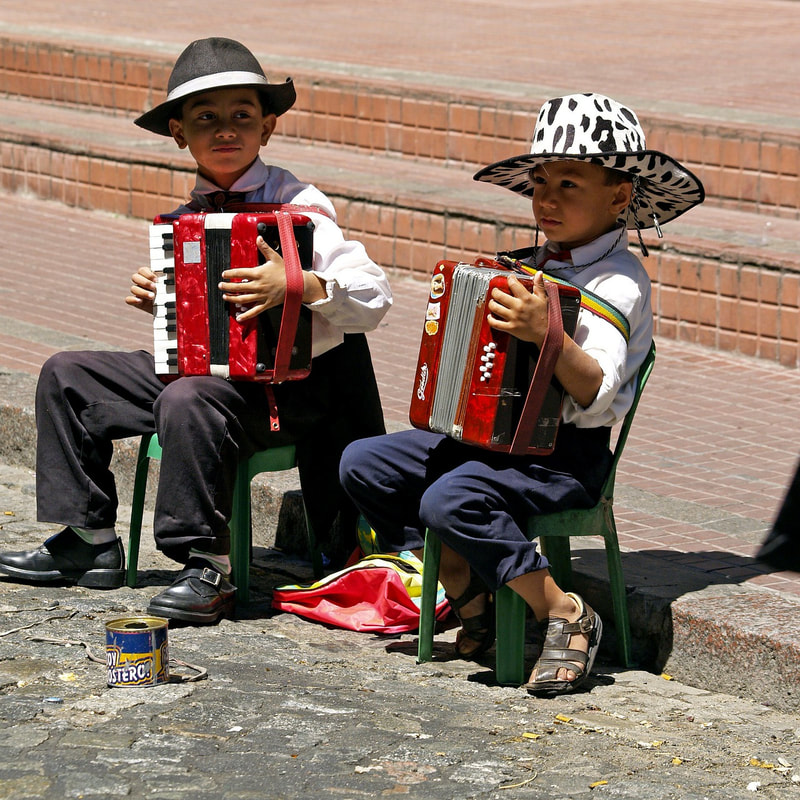
 RSS Feed
RSS Feed
